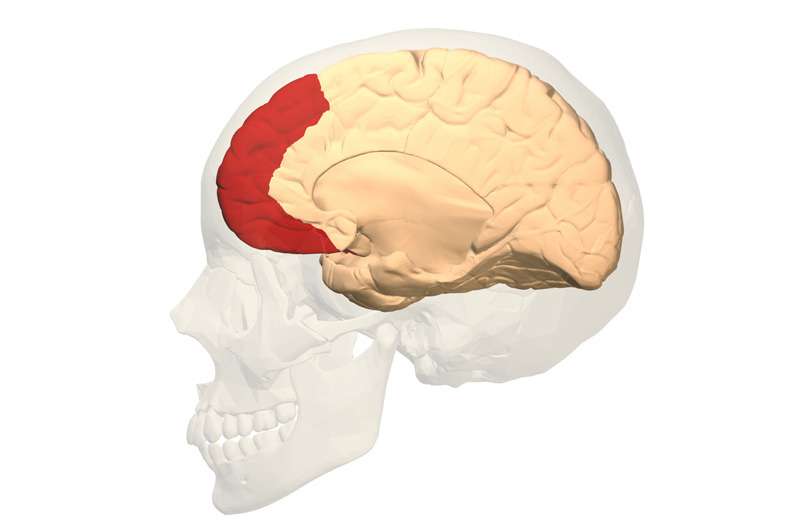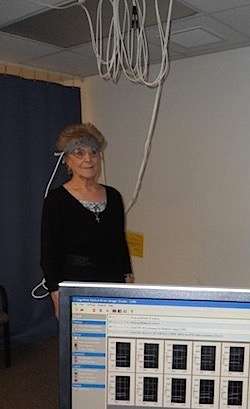New brain imaging technology offers new approach for studying Parkinsonian syndromes

Using a portable device developed at Drexel University, researchers at Albert Einstein College of Medicine have identified differences in brain activation patterns associated with postural stability in people with Parkinsonian syndromes and healthy adults. The findings, published recently in Brain Research , describe the critical role of the prefrontal cortex in balance control and may have implications with respect to detecting and treating Parkinsonian symptoms in the elderly.
Parkinson's disease is a neurological disorder that arises when brain cells that control movement die, leaving many patients in the late stages of the disease unable to take a few steps before falling. Parkinsonian syndromes, which are common in older adults, are conditions that do not rise to a Parkinson's diagnosis but encompass many symptoms of the disease, like rigidity, tremor and difficulty walking.
Past attempts to compare brain activity and stability in people with Parkinsonian syndromes have been limited, because neuroimaging tools could only be used when a study participant was lying flat, rather than walking or standing. In these cases, the person undergoing the brain scan could only imagine that he or she was performing the tasks.
A portable system created by researchers in Drexel's School of Biomedical Engineering and Health Systems overcomes this challenge. It has allowed scientists, for the first time, to better understand the role of the brain's prefrontal cortex during standing and walking.
The device employs functional near-infrared, or fNIR, spectroscopy, which uses light to monitor changes in blood oxygenation in the brain as individuals perform tasks, take tests or receive stimulation. The prefrontal cortex is the area responsible for higher-level processing, such as memory, attention, problem solving and decision-making. When a person is learning a new skill, for instance, neural activity is greater in this region.

"Postural instability is a major risk factor for older adults. If we can monitor the cognitive component of staying balanced, then this could eventually lead to better treatment options for people with Parkinsonian syndromes or even Parkinson's disease," said Meltem Izzetoglu, PhD, an assistant research professor of biomedical engineering at Drexel who co-authored the study.
Researchers at Albert Einstein College of Medicine used the fNIR technology to compare 126 healthy adults to 117 individuals with mild Parkinson's symptoms and 26 with more severe symptoms. While wearing the fNIR headband, the participants were asked to stand and look straight ahead while counting for 10 seconds. They then walked on a mat that captured their gait speed, pace and stride length. The fNIR system recorded their brain oxygen levels during the entire testing period.
The researchers found that those with Parkinsonian symptoms demonstrated significantly higher prefrontal oxygenation levels to maintain stability when standing than participants with mild and no symptoms.
"In fact, brain activity in the frontal brain region was nearly twice as large," said Jeannette R. Mahoney, PhD, assistant professor of neurology at Einstein and the study's lead author.
"This initial study allowed us to measure brain activity in real-time, in a realistic setting. It shows that there are indeed differences in the prefrontal cortex of healthy and Parkinsonian syndrome patients, and those differences relate to their performance in maintaining stability while standing," Izzetoglu said. "It opens up new fields of research."
In an upcoming clinical trial, the researchers will use a computerized cognitive training program and the fNIR system to identify how cognitive training affects brain activation during walking.
The portable technology could aid in diagnosing Parkinsonian syndromes or developing interventions.
"Our goal is to be able to intervene with Parkinsonian symptoms and develop novel remediation in the not-so-distant future to improve elders' quality of life," Mahoney said.
More information: Jeannette R. Mahoney et al. The role of prefrontal cortex during postural control in Parkinsonian syndromes a functional near-infrared spectroscopy study, Brain Research (2015). DOI: 10.1016/j.brainres.2015.10.053
















